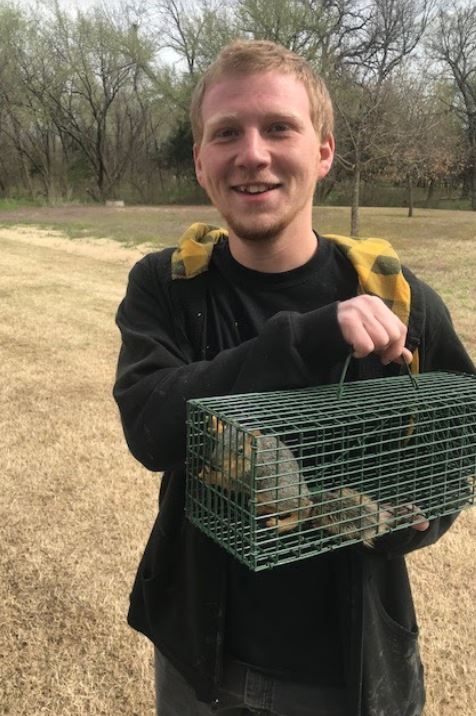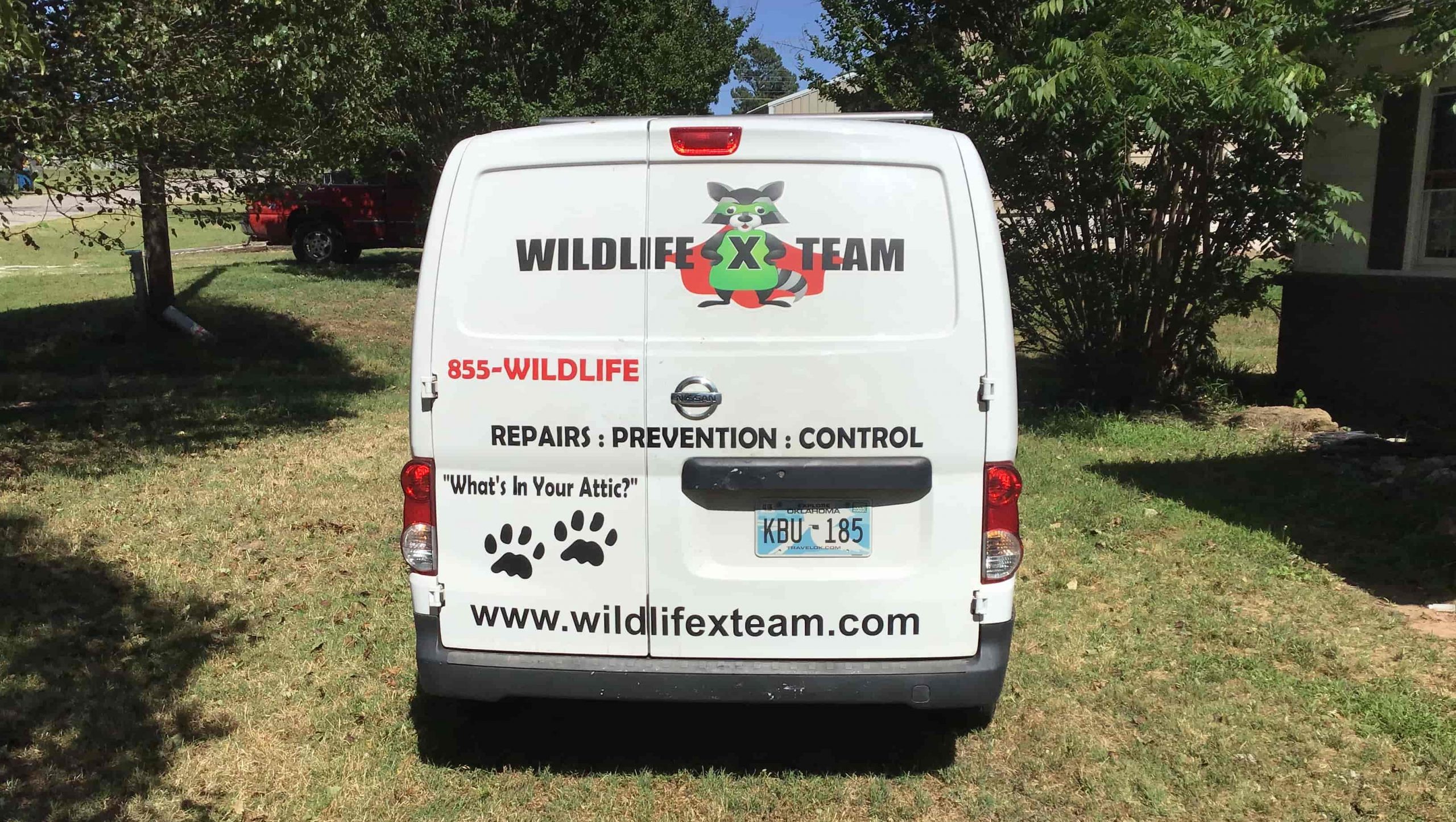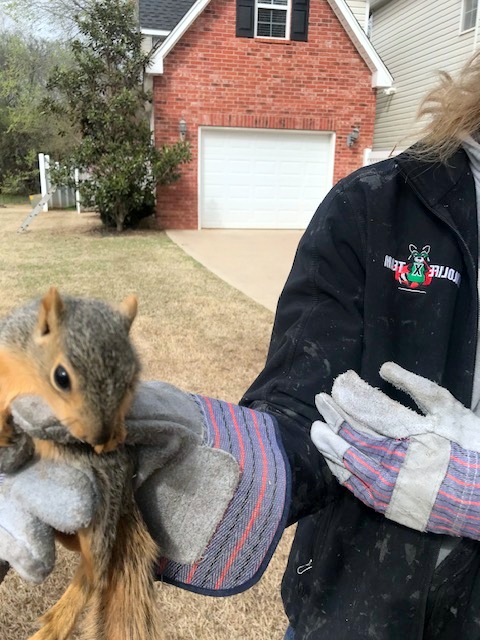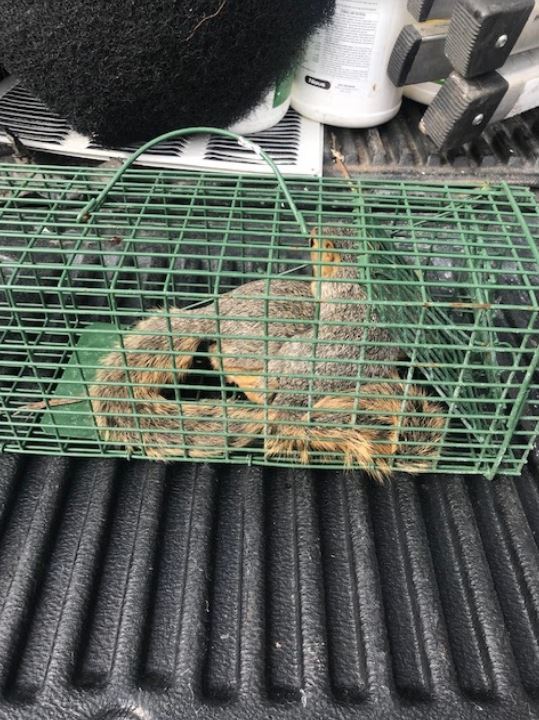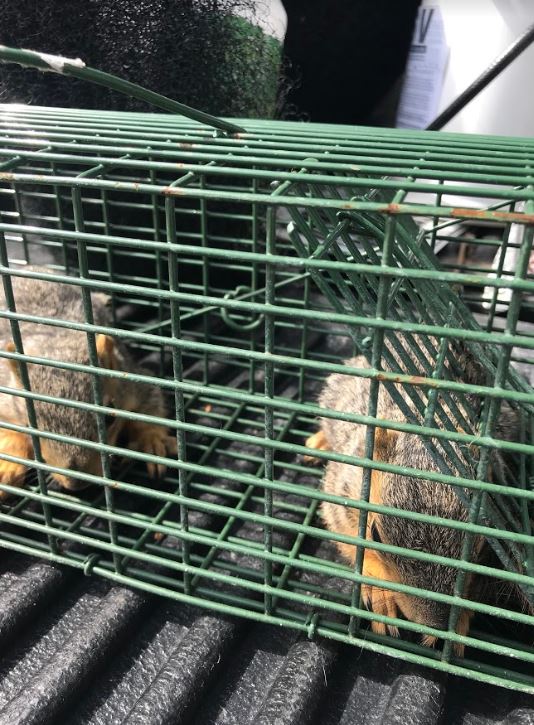
Call for Your Exclusive Wildlife Inspection Report.®
Squirrel Removal
Squirrels are nice to observe when taking a stroll through the park or forest. Their cute little faces, with bushy tails, are endearing. However, their cuteness is a veneer for their destructive capabilities. In the United States, squirrels are among the top cause of power outages as they chew on wires, cutting off power to thousands of people. If they gain access to your attic or home, they can cause lots of problems.
Some of the problems caused by squirrels that are faced by homeowners in Tulsa include:
- Chattering noises in the attic, which is a major disturbance.
- Chewing on wood and other materials in the attic.
- Residing in the chimney.
- Chewing on electrical wires which exposes homeowners to a fire hazard.
- A dying or dead squirrel inside the wall or chimney that’s causing odor problems.
- Risk of diseases. Some of the zoonotic diseases carried by squirrels include tularemia, typhus, ringworm, and rabies, among many others.
At Wildlife X Team Tulsa, we can help you develop and implement effective strategies that will rid you of your squirrel infestation problems.
What Attracts Squirrels?
Squirrels are attracted to human settlements for two major reasons: food and shelter.
- Food
Many people think squirrels only eat nuts, but that’s not entirely true. They are omnivores and will eat small insects, caterpillars, and even small animals in addition to plants. If you have a garden in your yard, that’s a major attractant to squirrels because of the variety of fruits and plants there. They are also attracted to bird feeders because of the seeds.
- Shelter
Squirrels love height. That’s why they reside in high places like trees, attics, and chimneys. Attics and chimneys, in particular, provide them with warmth and safety from predators. Moreover, it’s the perfect place for them to raise their young ones.
That’s why at Wildlife X Team Tulsa, we advise homeowners to ensure that squirrels do not have access to food or shelter on their property. That way, there’s less incentive for them to cause an infestation problem.
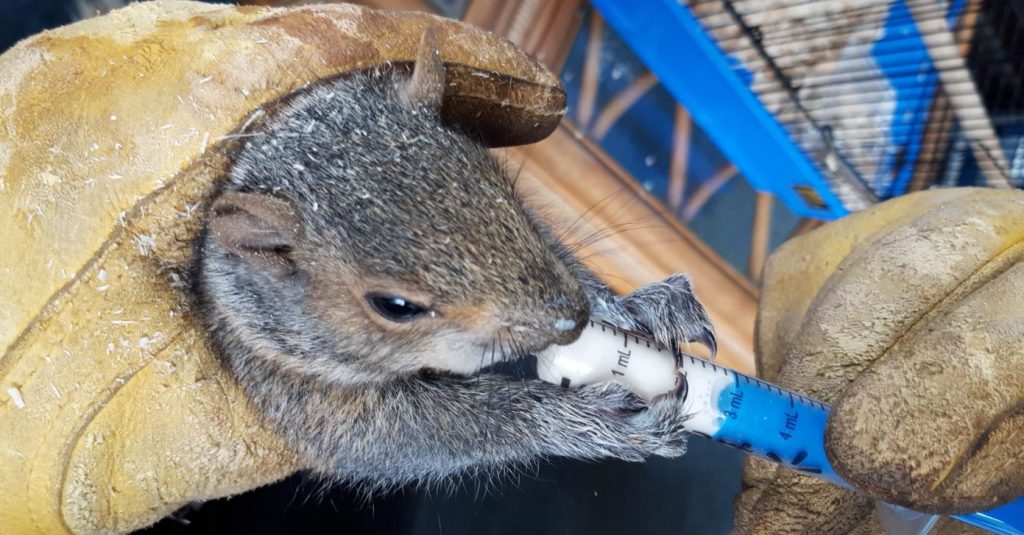
Get Quote for Your Exclusive Wildlife Inspection Report.®


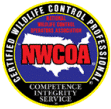
Squirrel Removal Process
Removing squirrels requires a good understanding of squirrel behavior to develop an effective approach based on the uniqueness of your problem. That’s why we recommend involving professionals.
At Wildlife X Team Tulsa, here’s our squirrel removal process:
Thorough Inspection
Squirrel removal starts with a deep investigation into the problem. First, you have to figure out exactly how they’re getting in. This stage is very important because failure to identify all their entry holes will make it difficult to address the problem
Trapping
Trapping is the most effective method of removing squirrels from your house. Once you’ve identified all potential entry holes, seal them all up, except one. Thereafter, install a repeater trap at the last entry hole. This trap captures all the squirrels as they try to exit your house. Make sure you check your attic properly to ensure that there are no baby squirrels. If there are, wear your hand gloves and pick them up. Thereafter, you can relocate them to another area. The final hole should then be sealed to prevent reentry.
An effective trap setting is dependent on several factors, like choosing the right trap and bait, as well as selecting the perfect spot. Moreover, in some districts, squirrel trapping is subject to state law. That’s why involving a licensed professional company like Wildlife X Team Tulsa is usually the best option.
Decontamination and Repairs
A squirrel in your yard or attic will leave all kinds of rubbish there, including droppings, nesting materials, food crumbs, wood chips, and more. These remnants attract other insects like cockroaches, which can spread diseases. After removing all these remnants, the infected space must be decontaminated with an enzyme-based cleaner that destroys organic materials and deodorizes the space.
Finally, the chewed wood must be repaired to maintain the structural integrity of your building. Moreover, all damaged roof tiles, insulation materials, electrical wires, pipes, and more must either be repaired or replaced.
Squirrel Prevention
Once the squirrel infestation problem has been eradicated, necessary actions have to be put in place to make your yard unattractive to them. Some things to bear in mind include:
- Cut off branches overhanging your roof as it provides access to your attic.
- Make your birdfeeder inaccessible to squirrels.
- Install a chimney cap to make your chimney inaccessible to squirrels.
There are several squirrel repellents available like cayenne pepper and mothballs but their effectiveness is not conclusive.
How to Prevent Squirrels from Garden
Squirrels are one of the most beloved animals that visit yards due to their antics and seemingly insatiable need to jump around and move. While they might be fun to watch, these critters can wreak havoc on gardens. It does not matter whether your garden is made up of vegetables, fruits, flowers, or trees and shrubs. Squirrels can cause serious problems. Continue reading to learn how you can prevent squirrels from getting into your garden.
What damage do squirrels cause in gardens?
Squirrels are highly destructive animals no matter whether they make it into your home, or even just your garden. Berries, seeds, vegetables, nuts, and fruits are all some of the preferred sustenance for squirrels, so it is easy to see how they can put the hurt on gardens. In addition to this, squirrels will often dig around looking for other food within your flower beds. This can lead to even more damage and destruction to your plants. Continue reading to find out how you can prevent squirrels from getting into your garden.
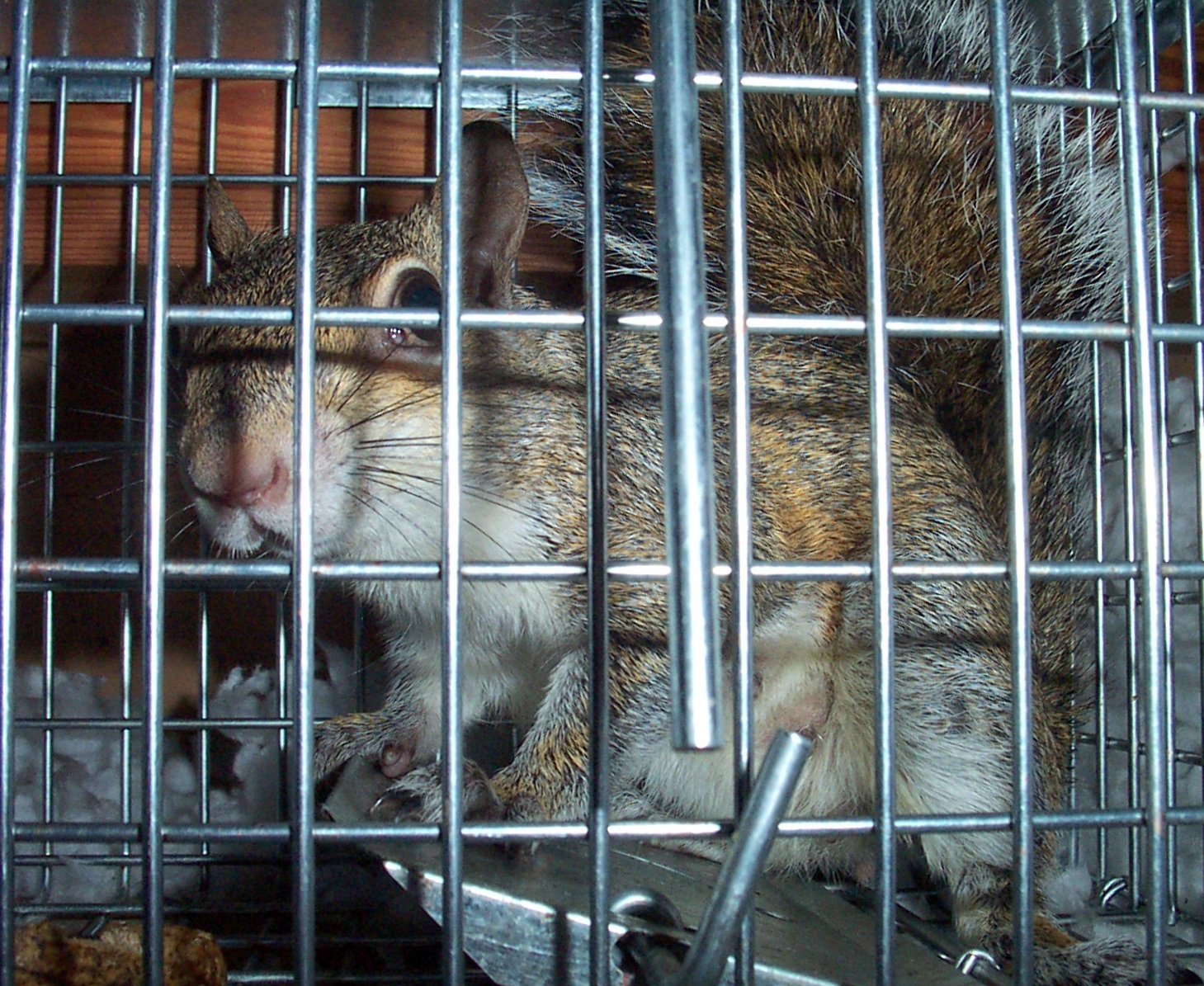
Repellent Plants
While squirrels seem to relish the opportunity to eat virtually any plant, this is not quite the case. In fact, there are many plants that squirrels find very distasteful. Among these plants include daffodils, as they are well-known for deterring squirrels, deer, and rabbits. Alliums, galanthus, geraniums, hyacinths, and fritillaries are also all commonly used to repel squirrels. By simply planting these around the edges of your garden, or even interspersing them within, you can cut down on squirrel damage in a large way. The best part is, many of these plants will also keep other animals that damage plants away as well.
Squirrel Repellents
While many people seem hesitant to believe that squirrel repellents work, they do in many cases. This depends heavily on the ingredients and how the repellent is used, as well as how often it is reapplied. Since these repellents are placed outside, they need to be reapplied fairly often, as wind, rain, and the elements can weaken their efficacy over time. If you do not mind spending the money and can reapply frequently, these may be a great choice.
Get Rid of Food Sources
One of the biggest reasons that squirrels are attracted to properties in the first place is the lure of easy food sources. When there are bird feeders that are easy for squirrels to access, they will always see the yard as a place to find food. This leads to them wandering around and eventually finding your garden. Cutting out food sources is a quick, simple process. If you want a bird feeder, buy squirrel-proof models. If you have a fruit or vegetable garden, always clean up any old or discarded produce. Finally, be sure to keep all garbage and pet food secured, away from the prying hands of squirrels.
Deterrents
While deterrents might seem broad, that is because there are many deterrents people use to keep squirrels away. One of the most common is your pets. Having a cat or dog, or multiple pets, out in your yard is an excellent way to keep squirrels away from your garden. Similarly, many people use noisemakers and light devices to keep squirrels away from gardens. Finally, a squirrel-proof fencing or chicken wire over and around your garden may be the only option you have left.
Why hire Wildlife X Team Tulsa?
Here at Wildlife X Team Tulsa, we know how to take care of squirrel problems. With years of experience, our experts have dealt with squirrel problems inside of homes, on properties, and especially with garden-damaging squirrels. Wildlife X Team Tulsa prides itself on the excellent wildlife removal services we provide, as well as decontamination, damage repair, and wildlife exclusion services. If you have a problem with squirrels eating your garden, give us a call here at Wildlife X Team Tulsa, as we would love to help you out.
Why Choose Wildlife X Team Tulsa
Our team of professionals at Wildlife X Team Tulsa has been adequately trained to develop effective wildlife removal strategies. Let us help you today to deal with your squirrel infestation problem.
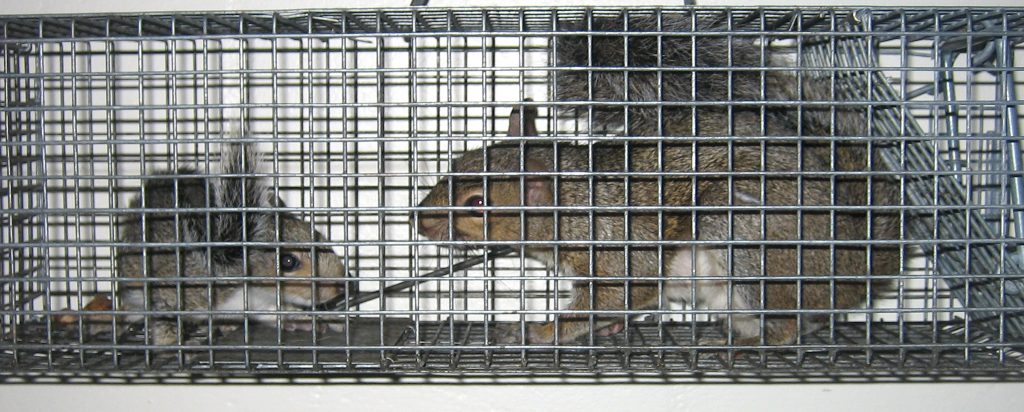
How to Remove Squirrels From Chimney?
We all like to think of squirrels as these furry, highly adorable critters that climb up a tree while our dog chases them, and we’re busy filming everything. But a squirrel inside your home can actually be responsible for quite a bit of damage, especially if it gets inside the chimney.
Now, you might think to yourself, what’s the big deal? Squirrels habitually live inside weird spaces, so what’s so bad about a chimney? This brings us to our first question…
Are squirrels in the chimney dangerous?
Yes. squirrels living in your chimney are dangerous. Aside from exposing you to the various bacteria they carry, squirrels in the chimney can actually threaten the very stability of your home.
Now, squirrels usually move into the chimney during the warm months, when chimneys are safe, dry places to nest in. but then, when the winter comes, so do the fires inside the chimney place.
The first danger is to the squirrel itself, since because of the intense heat and thick smoke, it might not be able to evacuate in time, and thus burn to a crisp. Secondly, the presence of squirrels inside the chimney also endangers your own safety, since nesting materials and the animals themselves make for excellent kindling. This can weaken the chimney structure, and risk collapse, or even worse, pose the risk of the whole house burning down.
So it stands to reason that, if you’ve got squirrels in the chimney, you want to get them out ASAP.
How do you know it’s squirrels?
Squirrels aren’t the only critter that can squeeze into your chimney. Bats, rats, and even raccoons have been known to nest inside, but one telltale sign that it’s squirrels is that they make a lot of noise during the daytime. Since the other common intruders are nocturnal animals, the scurrying you hear at noon is most likely to be squirrels.
So how can you get them out?
This should go without saying, but under no means are you to start a fire. Now, there are a few ways to get squirrels out. Sometimes, you may get the job done by simply opening the damper, which would allow the squirrel to come down and into the home. Obviously, you may want to have some trapping methods in place, so that the squirrel doesn’t run amok through the rest of the house.
Alternatively, you may try a live trap on the upper end of the chimney. Since the squirrel is bound to come out sooner or later, to look for food, placing a baited live trap along its natural path can be a great way to capture and relocate the squirrel to a place where it can’t bother you.
Once you’ve got the squirrel out, it’s important to check for baby squirrels, since they will be unable to climb out on their own. Baby squirrels can be safely removed using a long chimney snare pole). However, we do recommend hiring a professional chimney sweep or wildlife removal specialist to remove your squirrel problem for you. There are certain benefits to getting a pro to do it.
What to do next…
Once you’ve removed the wild animals from your chimney, it’s also important to remove their nests, and any other debris that might’ve gotten stuck in there. A professional chimney cleaning can go a long way, in ensuring your home safety.
Once this is done, you will want to prevent future invasions from occurring, and the best way to do this is by fitting a chimney cap over your chimney opening. A chimney cap is the only way to prevent animals and natural debris from falling down your chimney.
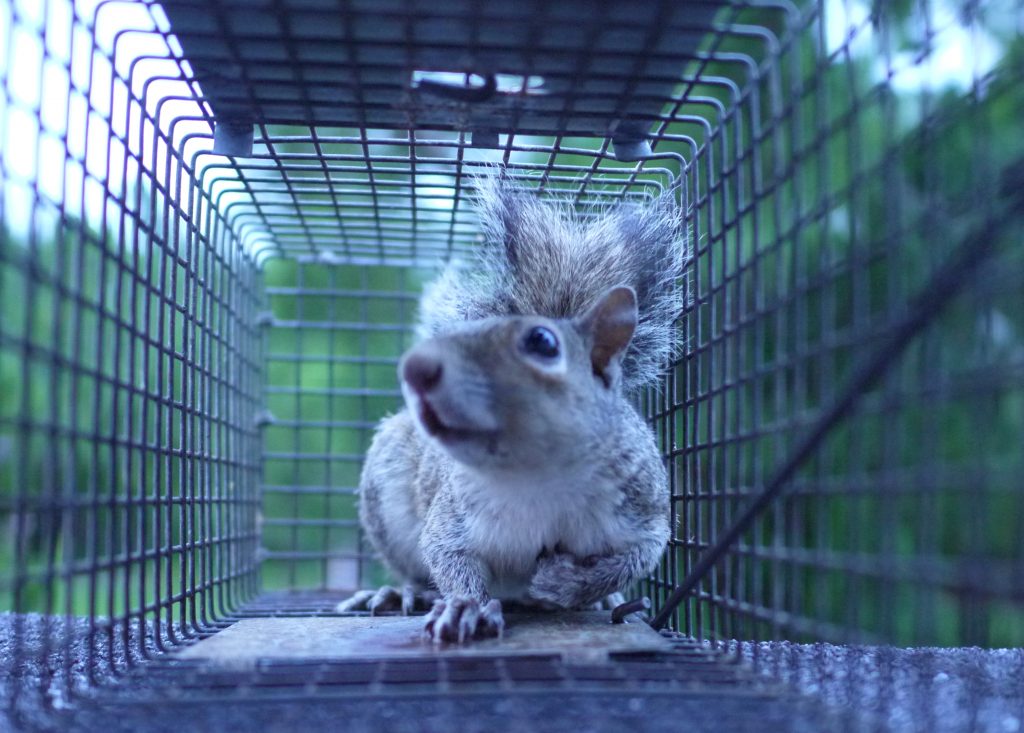
How To Remove Squirrels From The Attic?
Squirrels are just as problematic as other rodents. They all have the need to constantly chew on things, which means they’ll damage anything they find in your attic. This includes stored furniture, wires, and insulation. Repairing all this damage can be expensive, so it’s important to remove squirrels as quickly as possible.
Traps
One common removal approach is to trap squirrels. This method works well if you place the trap near the squirrel nest and bait squirrels with peanut butter. Once you catch the animals, you can relocate them far away from your home.
Exclusion
Exclusion is a very effective technique for squirrel removal. The idea is to seal all the pathways into your home, except for one. You then place a one-way door over this last entry, which allows squirrels to leave but blocks them from getting back inside. Within a few days, all the squirrels in your home will leave on their own in search of food.
The only thing to keep in mind is the time of year. It is best to use exclusion during the winter months, from November to February. This way you can ensure there aren’t going to be any abandoned baby squirrels in your attic.
Professional Help
Placing traps or performing exclusion is a difficult and time-consuming task. That’s why you should call a professional to help. Experts already have all the equipment and know-how, so they can solve your problem much quicker. Professionals will also help you prevent future infestations, all while providing you a guarantee.
Squirrel Prevention
Squirrel removal is just half the battle. Unless you take preventative measures, other squirrels will enter your attic and you’ll have to repeat the entire process all over again.
Food Sources
Wild animals are always on the lookout for food and water. If you have squirrels in your attic, that means they’ve found a reliable food source around your home. You can prevent future squirrel infestations by removing these food sources.
- Garbage. Animals can rummage through your garbage in search of food. Buy an animal-proof trash can and keep it sealed to prevent that from happening.
- Birdfeeders. Squirrels eat the same things as a lot of birds, so your bird feeder also attracts these rodents. You should remove your bird feeder, move it farther away, or try to squirrel-proof it. Consider adding a squirrel baffle or feeding your birds safflower seeds.
Entry Points
Squirrels have to enter your home through a handful of openings. You should find and block off as many of these as possible to keep squirrels from getting inside.
- Trees. Squirrels are great climbers, so they can get up nearby trees and jump onto your roof and get inside your attic. You should trim tree limbs so they are at least 6 feet away from your home.
- Poles. These rodents can climb metal poles just as easily as trees. That’s why you should fasten baffles around nearby poles to make it difficult for the squirrels to climb.
- Home damage. Over time your home gets damaged, which creates small cracks and holes on your roof or walls. Squirrels can use these to get inside, so you should perform regular maintenance to ensure these entries are sealed up tight.
- Chimneys. Squirrels can get inside through your chimney, so it is important to install a chimney cap. Ensure it is in good condition and perform repairs whenever needed.
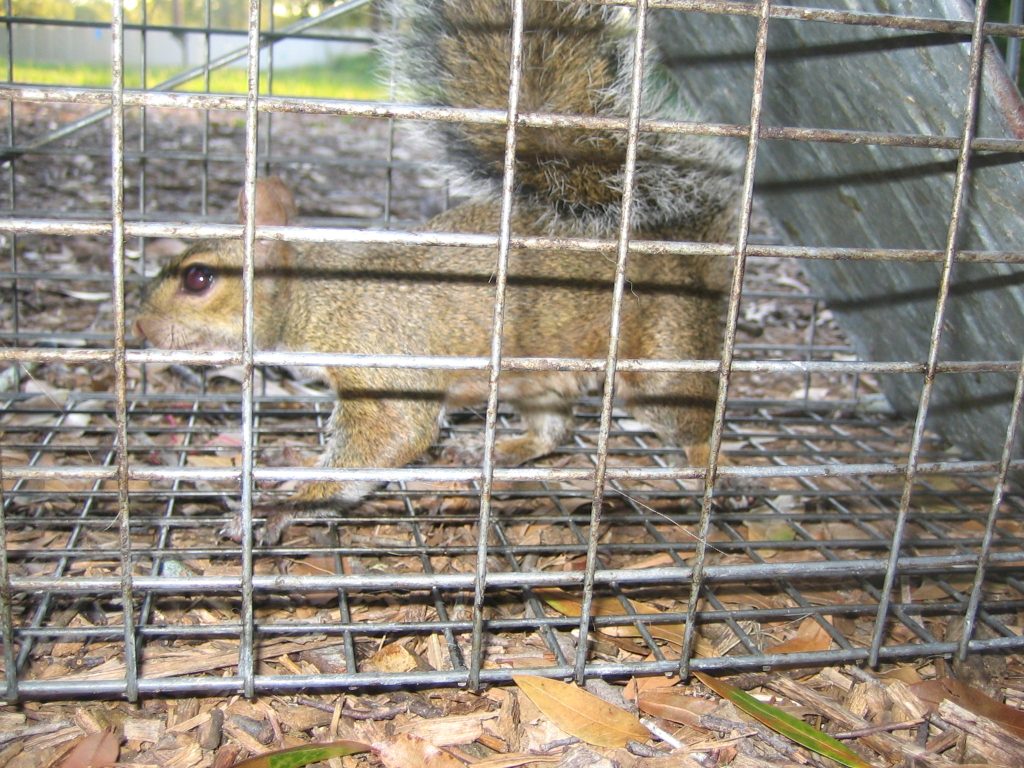
How To Remove Squirrels From The Attic?
Squirrel Removal
Squirrels are just as problematic as other rodents. They all have the need to constantly chew on things, which means they’ll damage anything they find in your attic. This includes stored furniture, wires, and insulation. Repairing all this damage can be expensive, so it’s important to remove squirrels as quickly as possible.
Traps
One common approach to squirrel removal is to trap them. This method works well if you place the trap near the squirrel nest and bait squirrels with peanut butter. Once you catch the animals, you can relocate them far away from your home.
Exclusion
Exclusion is a very effective technique for squirrel removal. The idea is to seal all the pathways into your home, except for one. You then place a one-way door over this last entry, which allows squirrels to leave but blocks them from getting back inside. Within a few days, all the squirrels in your home will leave on their own in search of food.
The only thing to keep in mind is the time of year. It is best to use exclusion during the winter months, from November to February. This way you can ensure there aren’t going to be any abandoned baby squirrels in your attic.
Professional Help
Placing traps or performing exclusion is a difficult and time-consuming task. That’s why you should call a professional to help. Experts already have all the equipment and know-how, so they can solve your problem much more quicker. Professionals will also help you prevent future infestations, all while providing you with a guarantee.
Squirrel Prevention
Squirrel removal is just half the battle. Unless you take preventative measures, other squirrels will enter your attic and you’ll have to repeat the entire process all over again.
Food Sources
Wild animals are always on the lookout for food and water. If you have squirrels in your attic, that means they’ve found a reliable food source around your home. You can prevent future squirrel infestations by removing these food sources.
- Garbage. Animals can rummage through your garbage in search of food. Buy an animal-proof trash can and keep it sealed to prevent that from happening.
- Birdfeeders. Squirrels eat the same things as a lot of birds, so your bird feeder also attracts these rodents. You should remove your bird feeder, move it farther away, or try to squirrel-proof it. Consider adding a squirrel baffle or feeding your birds safflower seeds.
Entry Points
Squirrels have to enter your home through a handful of openings. You should find and block off as many of these as possible to keep squirrels from getting inside.
- Trees. Squirrels are great climbers, so they can get up nearby trees and jump onto your roof and get inside your attic. You should trim tree limbs so they are at least 6 feet away from your home.
- Poles. These rodents can climb metal poles just as easily as trees. That’s why you should fasten baffles around nearby poles to make it difficult for the squirrels to climb.
- Home damage. Over time your home gets damaged, which creates small cracks and holes on your roof or walls. Squirrels can use these to get inside, so you should perform regular maintenance to ensure these entries are sealed up tight.
- Chimneys. Squirrels can get inside through your chimney, so it is important to install a chimney cap. Ensure it is in good condition and perform repairs whenever needed.
Our Wildlife Control Services
